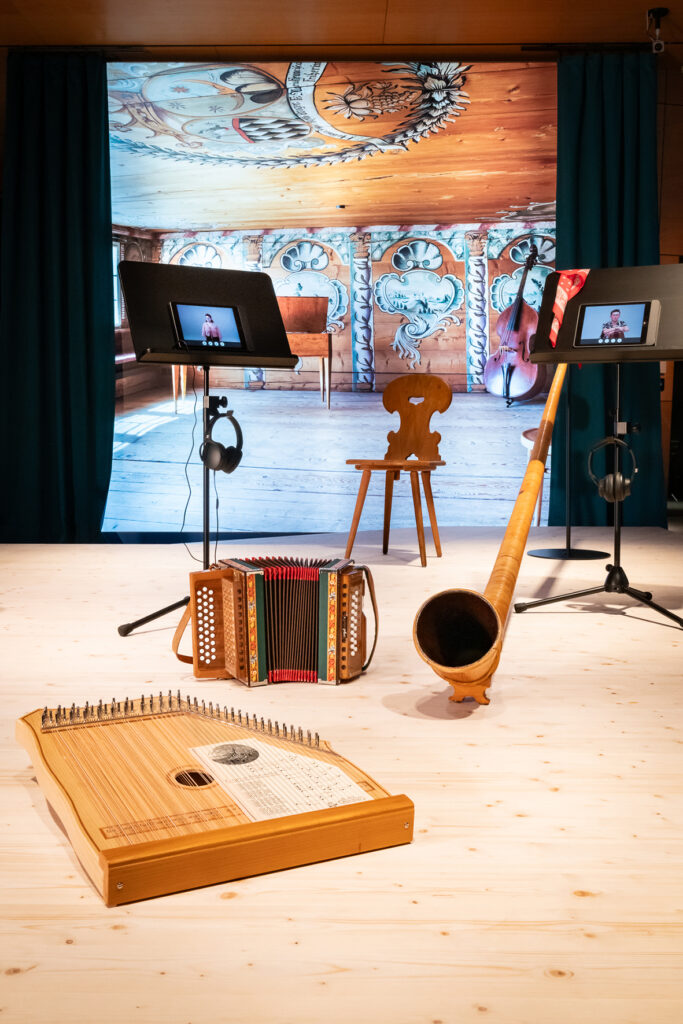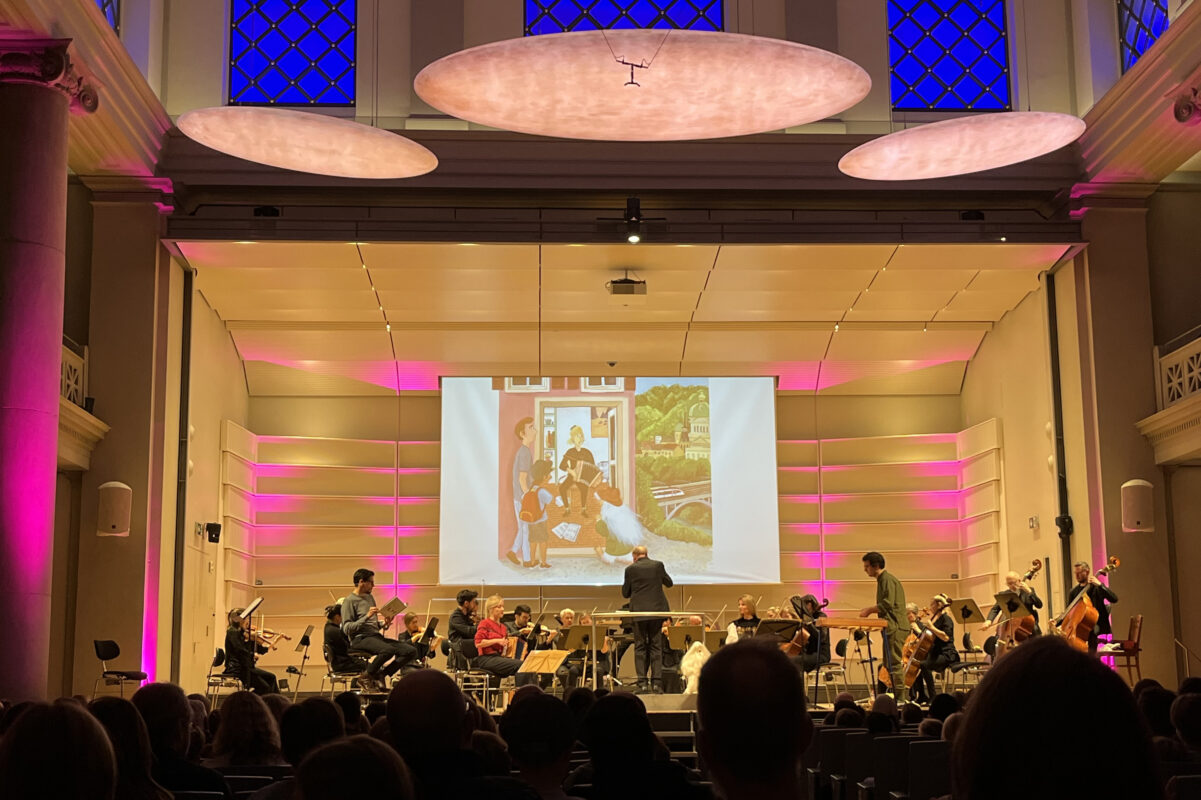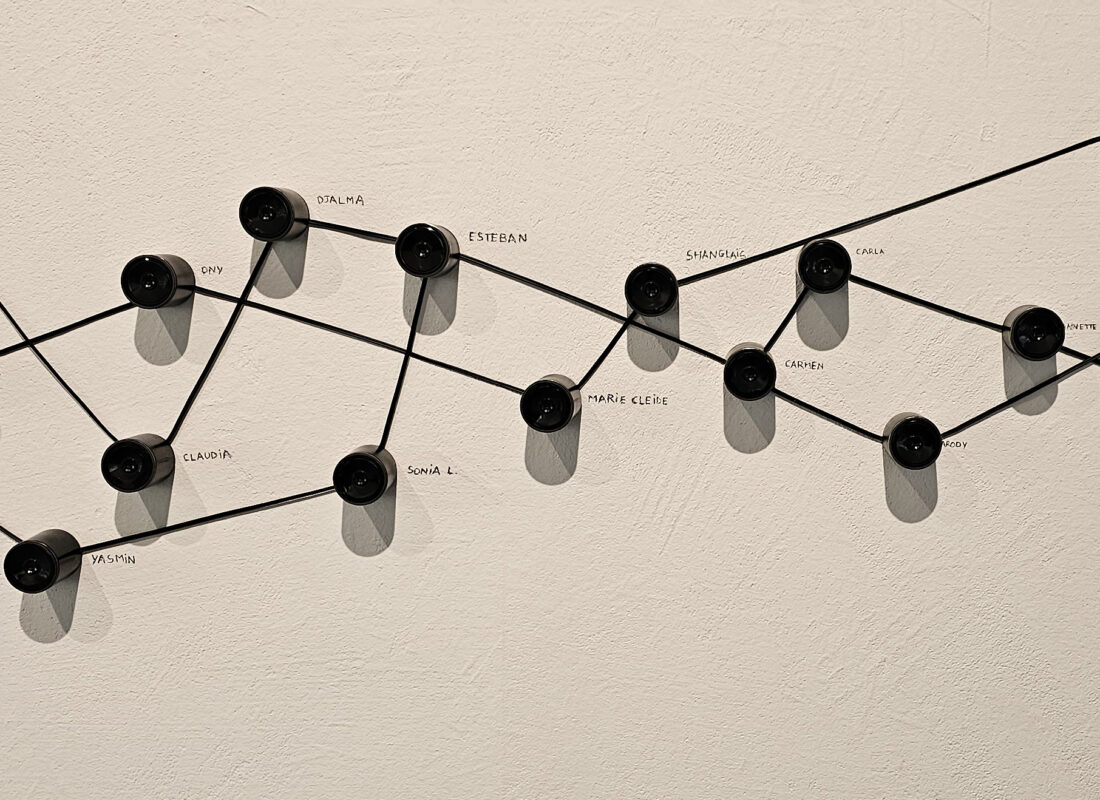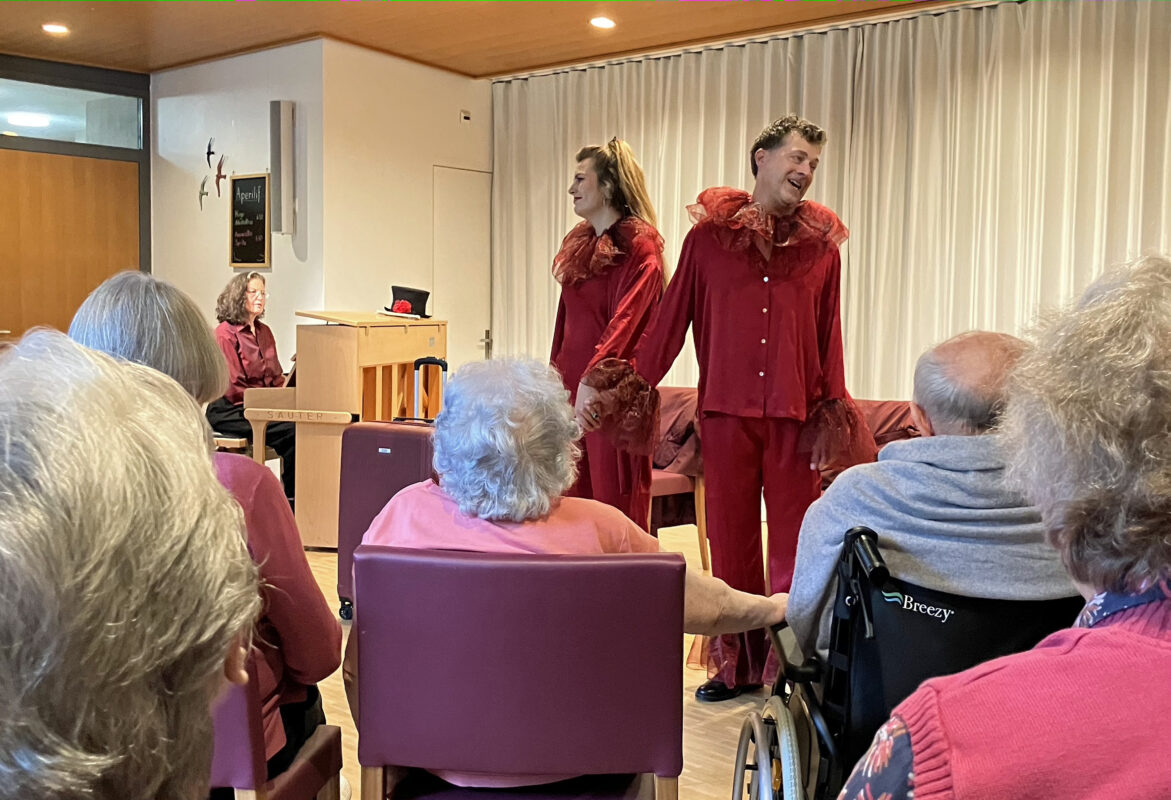This is what Swiss folk music sounds like
The interactive exhibition "Folk Music" has been on display at the Forum of Swiss History in Schwyz since mid-June. The focus is on the Schwyzerörgeli, alphorn, dulcimer and yodel.
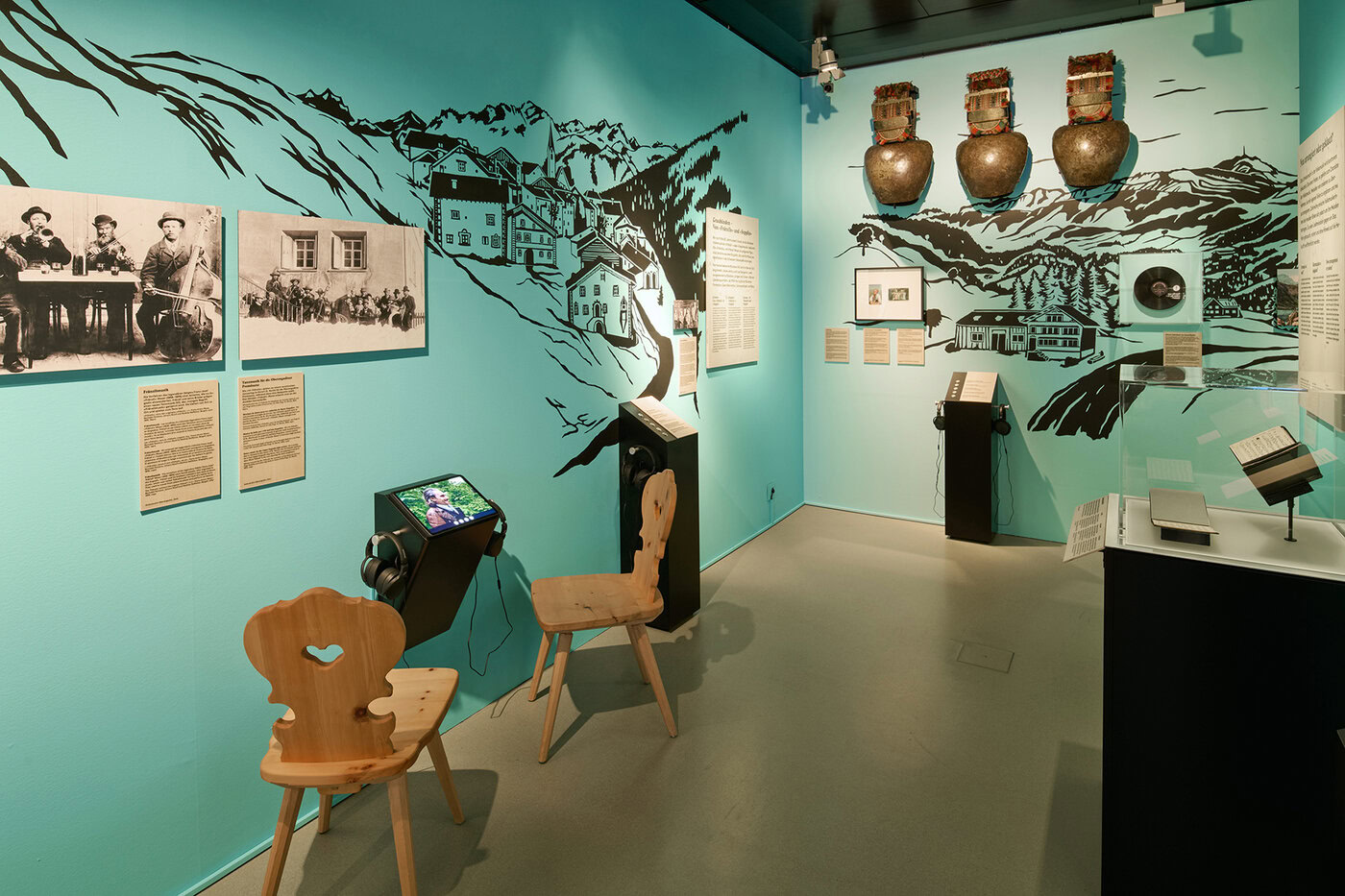
For more than fifty years, traditional, folkloristic and now also contemporary folk music has been documented in books, music books, recordings, films, temporary exhibitions, the permanent exhibition in the Ballenberg Open-Air Museum and in the two competence centers in Altdorf and Gonten.
Sibylle Gerber and Laura Rompietti drew up the concept for the special exhibition "Folk Music" at the Forum Schweizer Geschichte in Schwyz from this extensive material, visits to music festivals and folk music concerts and research in the SRF television archives and photo collections, and only after this preliminary work did they look for suitable exhibits. It was not primarily folk music instruments and pictures that were selected, but representative sound examples in impressive abundance. For reasons of space, the curators have refrained from presenting the entire phenomenon and have attempted to capture some aspects of Swiss folk music. However, Swiss folk music can be heard in many variations at several media stations, during requested improvisations by visitors and in the varied supporting program.
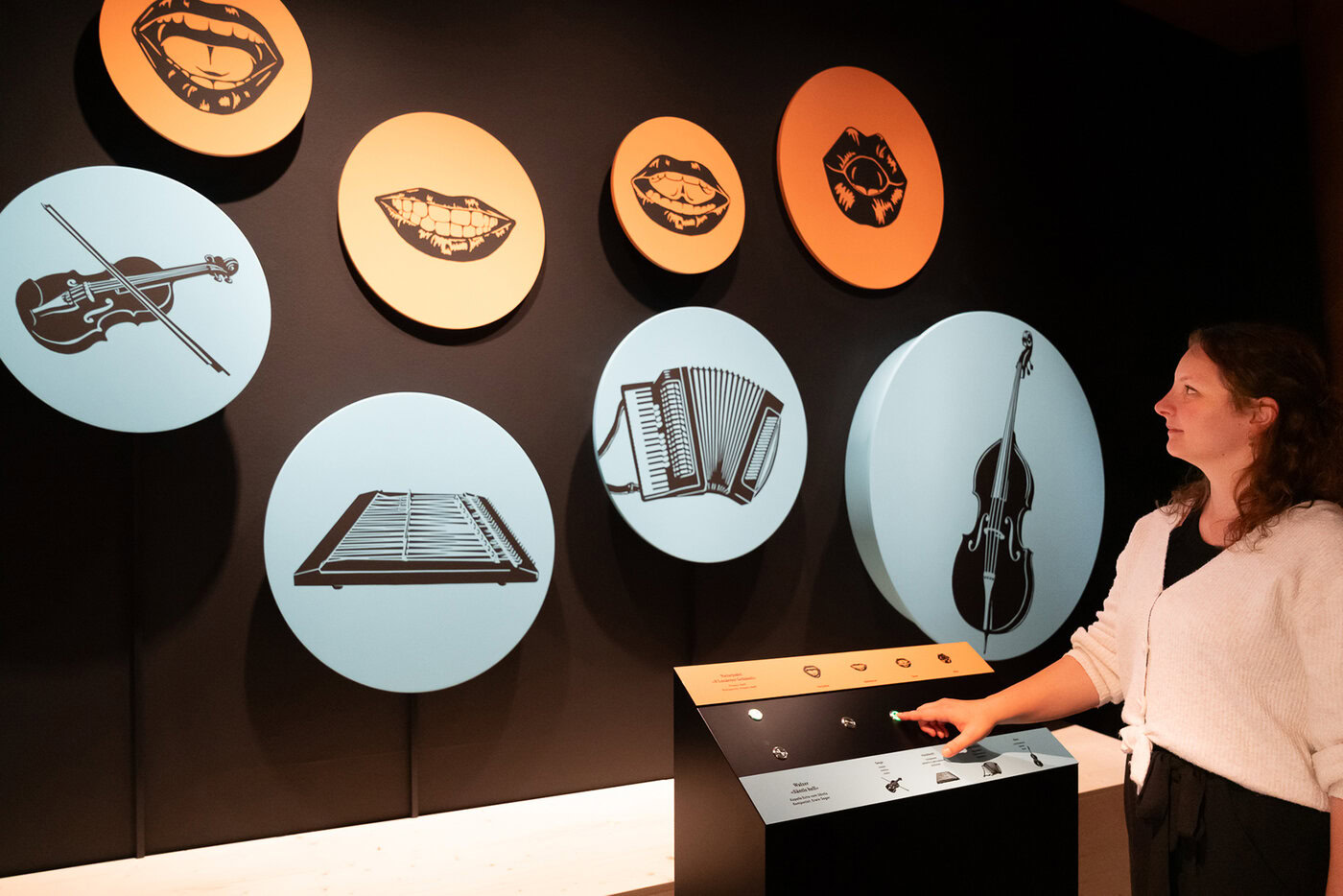
Together with graphic designers and sound engineers, the exhibition organizers have succeeded in recalling an important part of Swiss folk culture. Although the various types of alphorn - the bent form, Büchel, Stockbüchel and Tiba - are on display, the unique range of different functions from lure to rock instrument of the national symbol is missing. In addition, the talented Schaffhausen alphorn player Lisa Stoll talks about her relationship with the traditional costume and her instrument, which she demonstrates in a refreshing recording at one of the media stations. The fact that the hammered dulcimer, the most important instrument of the Appenzell people, was once widespread throughout Switzerland and can still be heard today in Valais is withheld from the visitor, but in the film Nicolas Senn fills this gap in his professional explanation of the old stringed instrument and its demanding playing style. In other videos, a Schwyzerörgel player and a yodeler demonstrate the popularity of folk music among young musicians.
Formations and landscapes
The special exhibition in Schwyz shows the representative formations of Swiss folk music: Ländlerkapelle (clarinet, Schwyzerörgeli and bass), string music (one or two violins, cello, double bass and dulcimer or accordion instead of the second violin and cello), Bandella (small wind band of the Ticinese) and the Fränzlimusik of the Engadine (string and wind instruments). The oldest ensemble cultivated in many folk traditions and associations, the fife and drum, is not to be found.
So-called musical landscapes are still recognizable in Switzerland today. These musical regions include the Appenzell region, the cantons of Schwyz, Ticino, Graubünden and the former mecca of country music, the city of Zurich. French-speaking Switzerland is represented by Joseph Bovet and his boys' choir, but where are the "accordéons jurassiens", modeled on the French musette, and the numerous choirs of French-speaking Switzerland that impress at the "Fête des Vignerons" in Vevey?
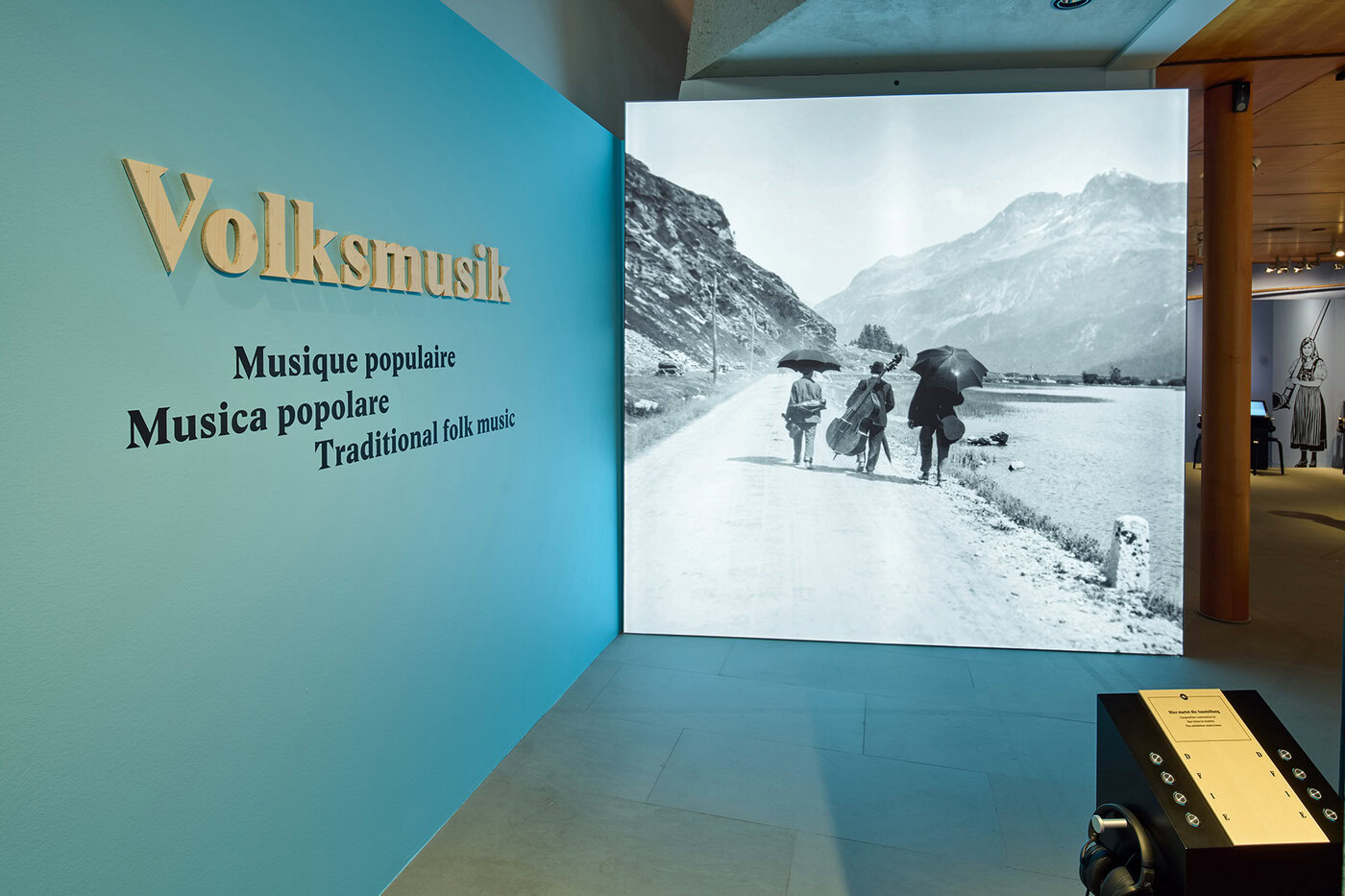
All the historical black and white photos might give the casual visitor the impression that Swiss folk music is a phenomenon of the past. However, the numerous concerts in the supporting program show that yodelling and playing the alphorn, dulcimer and Schwyzerörgeli are more alive than ever.
Awaken a love of music
The exhibition, which is accessible for ten months, is not tiring, on the contrary: large, woodcut-like illustrations of musicians and musical landscapes printed on the walls lead playfully to the easy-to-read text panels in four languages, to all the media stations with their fun content and finally to the "Stubete stage", where visitors can try out the instruments provided, but also demonstrate their own instruments that they have brought with them. And indeed, by seeing and hearing, visitors are encouraged to play, dance and sing themselves or are inspired to write on the huge blackboard what folk music means to them, what folk music actually is.
In Schwyz, a literally interactive exhibition has been created which, although it leaves something to be desired in terms of knowledge transfer here and there, makes you want to supplement your existing knowledge and make music yourself.
The supporting program offers guided tours for 60+, children's tours with an audio guide and dialogue tours with experts. Selected concerts in the tent in front of the museum are also recommended. If you can't take advantage of this and can't listen to your fellow visitors, you might come across the butcher making music next to the Forum of Swiss History, who plays the Schwyzerörgeli behind the store during work breaks.
"Folk music"
Forum Swiss History Schwyz
Until May 3, 2026
Tue-Sun 10-17 h
forumschwyz.ch/folkmusic






